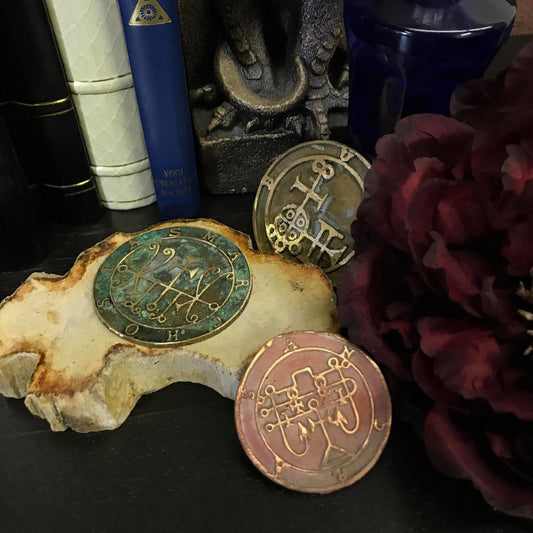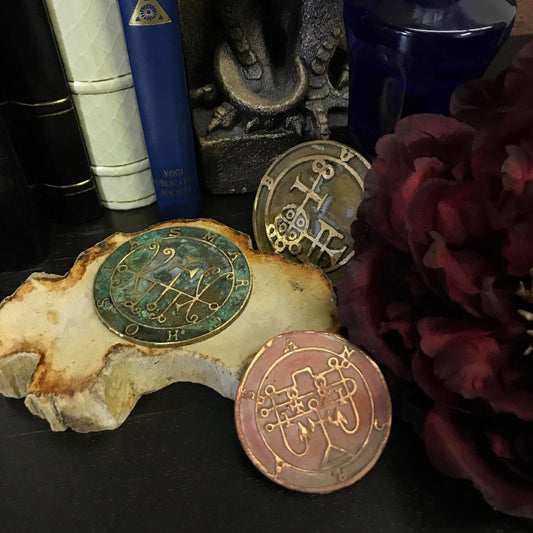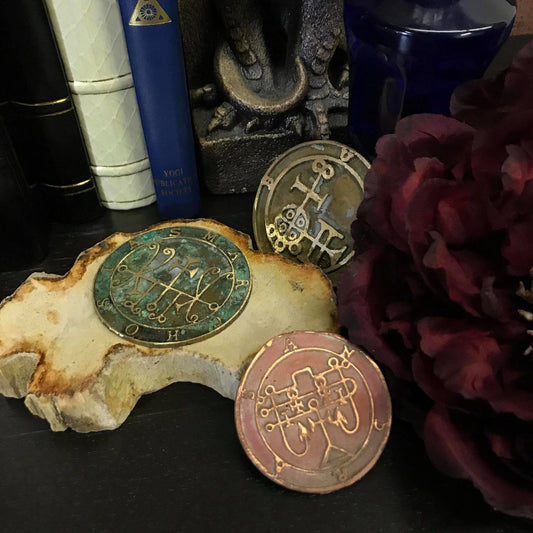Collection: Daemon seals
Cast or engraved seals of the Daemons from the Goetia, Grimoirium Verum, Grand Grimoire, and the like.
The Pseudomonarchia Daemonum and The Goetia
The first list is from the Pseudomonarchia daemonum by Johann Weyer (aka Wier, Wierus), which he included in his De praestigiis daemonum in 1583, and in 1584 Reginald Scot included the same list in The Discoverie of Witchcraft.
The second list, the seals, and engravings are from the Goetia at sacred-texts.com 1904 translation edited by S. L. MacGregor Mathers. If you wish to buy a copy of the Lesser Key (which contains the Goetia) I suggest Joseph Peterson's edition. I'm only using Mather's inferior edition here because its copyright (along with Mathers himself) has long expired. The Goetia is part of the Lemegeton, also known as the Lesser Key of Solomon.
Scot's edition of the Pseudomonarchia Daemonum is in all probability the source text for the Goetia. While the Goetia includes 4 Daemons that the Pseudomonarchia Daemonum does not (Vassago and the last three), Peterson points out that "The fourth spirit in Weyers text, Pruflas alias Bufas, was accidently left out of Reginald Scots English translation (found in his highly rational 1584 Discovery of Witchcraft), or was already missing from the edition of Weyer used by Scot. It is also the only spirit from Weyers list that is not found in the Lemegeton.". It seems to me that the Goetia includes some of Scot's slight mistranslations of names as well. Noone's sure why the order of the daemons got so mixed up between the Goetia and the Pseudomonarchia Daemonum.
The first set of seals come from the Goetia. The bands with the names of the daemons surrounding the seals were added by Mathers. The Goetia did not contain the engravings, either. The engravings Mathers included in his edition were originally by Louis Breton, and included in Dictionnaire Infernal by Collin de Plancy in 1863. De Plancy's list is not reproduced here. The Pseudomonarchia Daemonum did not include engravings or seals.
I've also added the descriptions and seals from Arthur Edward Waite's 1913 The Book of Ceremonial Magic, but it doesn't have its own list as that portion of the book was another translation of the Goetia.



